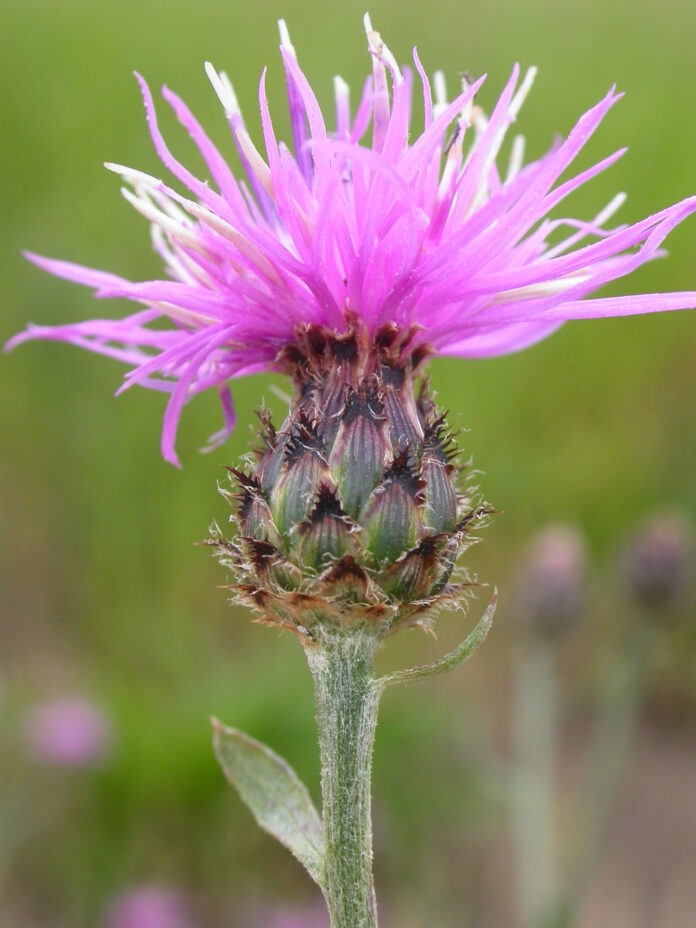
By Blaine Bug Crew
Making the change to midsummer heat is a difficult transition for most plants and animals, but spotted knapweed welcomes the dry, arid, dusty days of summer. The Blaine bug crew is hard at work monitoring, recording, and sending data to state and federal agencies as to the effectiveness of our biological (insect) control methods. This week we would like to highlight spotted knapweed and its insect predator in our efforts to inform the public about noxious weeds and our responsibility to control them.
Spotted knapweed is an herbaceous, short-lived perennial that reproduces entirely by seed. A plant may produce up to 25,000 seeds. Seeds are brown to black in color, smooth, and less than 0.25 inch long, and can remain viable in the soil for eight years. Flowers range in color from pink to light-purple and bloom from July to October. The flower head bracts are black-tipped, giving the plant its characteristic “spotted” appearance. Stems are typically 2 to 4 feet tall with lower leaves that are deeply lobed and upper leaves that are more linear. Spotted knapweed ranges from moist rangeland habitats to abandoned areas. Thirteen biological control agents have been approved for release for knapweed, but one in particular makes a big difference.
Cyphocleonus achates (CYAC) is a robust biological control agent that can attack spotted and diffuse knapweeds. CYAC overwinter as larvae in roots, where they mine the vascular tissue and reduce knapweed density. CYAC adults emerge from June to mid-September and feed on knapweed leaves. The adults are 0.5 to 0.6 inches long and generally live eight to 15 weeks. Each female deposits more than 100 eggs during her lifetime. Eggs hatch in 10 to 12 days and larvae begin feeding on roots.
As summer moves along, we will continue to work against this noxious weed and many others. With the public’s help, we can make more of an impact against the spread of spotted knapweed and find more areas that have been infested by them. If you have any questions or know of any infested areas please call Morgan Baird at (208) 788-5543.
